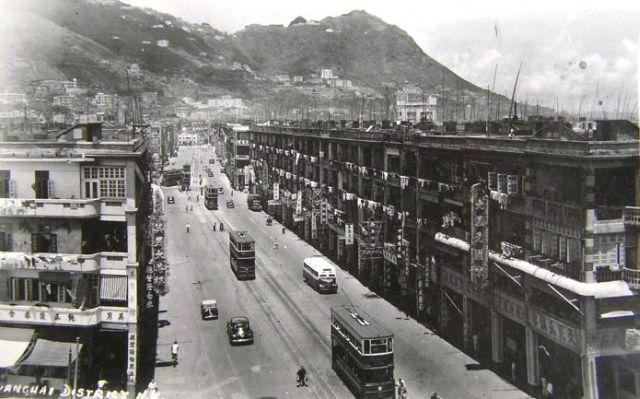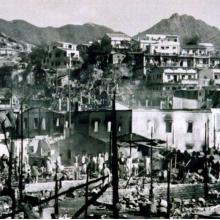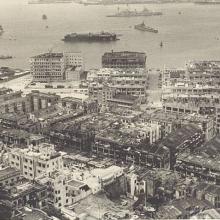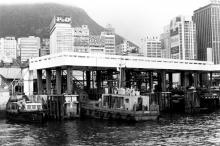Received via email.
1950s Wanchai
Primary tabs

Submitted by Admin
Date picture taken (may be approximate):
Sunday, January 1, 1950
Gallery:
Connections:
- 1950s Wanchai shows Place Tung Tak Pawn Shop, at Marsh & Hennessy [????- ]
- 1950s Wanchai shows Place Junction of Canal Road & Hennessy Road [????- ]




Comments
Wanchai in the 50's
Hi there,
This photo actually showed the Hennessy Road. I will send a marked-up photo to illustrate.
The side street running in the foreground near the edge is Canal Road West. I recognized this owing to a Historical Landmark in the Foreground by the right, the Tai Sam Yuen Restaurant, which was still there in the late the early 70's. See also the tram turning west at Tin Lok Lane and Hennessy.
T
Tram direction
Tram Direction
Re:Tram Direction
Tram Direction Happy Valley-Wanchai Timeline 1904-1930
Ngo Keng Kiu
Moddsey's mention of Ngo Keng Kiu reminded me I've heard MrsB use the term several times in the past - either when telling a minibus driver where to stop, or arranging where to meet someone. It's used to describe the point where the Canal Road Flyover crosses Hennessy Rd:
Ngo Keng Kiu literally means "Goose Neck Bridge". Many people think it refers to the flyover, as that seems to be the only bridge around. In fact the name dates back to when the area bounded by Canal Rd East & West was still a canal, crossed at Hennessy Road by Bowrington Bridge. The Chinese name for the bridge was Ngo Keng Kiu.
I'd read one explanation that the slender bridge was supposed to be reminiscent of a Goose's Neck. But Wikipedia has quite a different explanation under the entry for Canal Road:
Other notes:
MrB
thank you
Thanks moddsey & MrB for the correction regarding the tram direction.
By the way, I obtained the information from two books.
Regards,
Isdl
Photos of the Bowrington canal
Tramlines on Percival Street
Received via email:
Dates and Routes
1. Official Date
30 July 1904 was an official ceremony however the entire service was by 13 August.
2. Happy Valley routes
Initially the Happy Valley trams came in along Bowrington Road and out by Tin Lok Lane joining at Morrison Hill Road where it ran double track to the terminus. Afterwards the line was extended single track along Wong Nei Chong Road. The full loop was completed in 1922 and the double track along Morrison Hill Road was made single. Happy Valley trams then turned in Canal Road East (when the depot entrance at Russell Street) and changed to Percival Street (when the depot extension ended).
Regards, Joseph
canal road
Hi T:
You are right. The photo is looking west on Hennessy road at the intersection with Canal Road. Besides the Tai Sam Yuen on the right,
you can see another restaurant "英男茶樓" on the left at the intersection. The address of the latter is 418-428 Hennessy Road as recorded in this book here:
https://books.google.de/books?id=E0oREAAAQBAJ&pg=PA349&lpg=PA349&dq=%E8%...